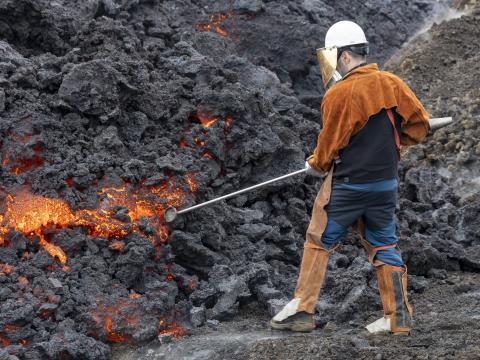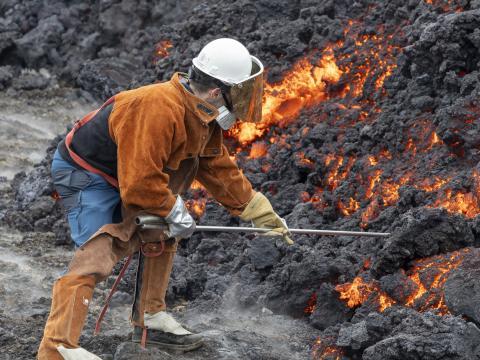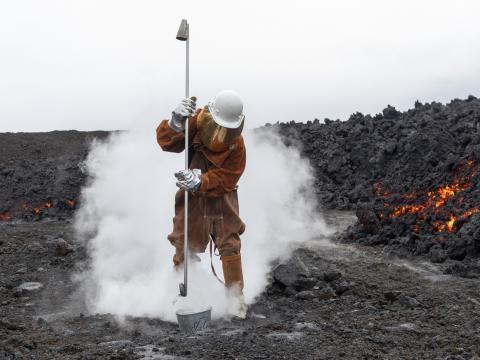
Volcanic eruption near Sundhnúksgígar craters 17th of March – Chemical analyses of lava samples and volcanic gas
Geochemistry of the emitted lava
Samples of tephra were taken south of Sýlingarfell and lava from the southernmost lava front near Húsafell on the 17th of March. The first petrology and geochemical data were acquired the same day. As before, images were taken and glass analyses were carried out by the electron microprobe of the Institute of Earth Sciences, University of Iceland.
Petrologically the new lava is similar to earlier lavas from near Sundhnúksgígar craters (Fig. 1). The chemical composition of the lava is also similar to the earlier lavas. For instance, the MgO content of the glass in the groundmass of the lava is 6.0 wt% whereas it is 6.8 wt% in the groundmass of the tephra. The average K2O/TiO2 ratio in the lava and tephra glass is 0.21 which points to relationship with magmas in earlier eruptions near Sunhnúksgígar craters. For more information we refer to previous reports at the website of the Institute of Earth Sciences.
Composition of volcanic gas
Measurements of the volcanic gas composition using open-path Fourier Transform Infrared Spectroscopy (OP-FTIR) were performed in the early hours of 17th of March. These measurements are done in cooperation of scientists from the University of Iceland and the Icelandic Meteorological Office (IMO). The measured gas composition is similar to what was measured on the 14th and 15th of January and 8th of February, with CO2/SO2 mass ratios of approximately 0.8.
SO2 emissions during the Sundhnúkur eruptions – Comparison with the Fagradalsfjall events
Sulphur (S) is a minor element in basaltic magmas, but when it is released, it causes significant hazard as the emitted SO2 is a poisonous gas.
S contents in basaltic glass is routinely analyzed by the electron microprobe at the Institute of Earth Sciences, University of Iceland. We measure the S content of glassy melt inclusions (Fig.1a) and groundmass glass in quenched lava (Fig.1a) and tephra (Fig.1b) samples to better characterize SO2 emissions during and after eruptions.
Glassy melt inclusions are trapped in minerals during mineral growth in the magma reservoir before the onset of SO2 release. In contrast, groundmass glass in tephra and basaltic glass quenched in the field are at least partially or fully degassed, which means lower S content compared to melt inclusions. Fig. 1 a and b shows an example of the difference in S content between melt inclusions and different types of groundmass glasses (quenched lava and tephra) in ppm S. The melt inclusion contains 1500 ppm S, whereas the groundmass glass in the quenched lava contains only 230 ppm S. The difference, 1270 ppm S, was released to the atmosphere before quenching.




